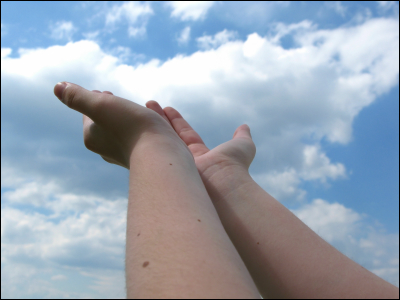The thicker the human or animal hair, the less intense it is

by
Although human hair is very thin, it is very strong, and one hair can support a weight of 100g or more. Was done in the early Meiji period Higashi Honganji Temple when the reconstruction work of, is a need for a rope with a strength than a normal rope to carry a huge wood, women believers is made by the hair and hemp, which was donated hair It is known that he used a rope . A research team at the University of California conducted an experiment to examine the strength of the hair of various animals, including humans, and discovered that “the thicker the hair, the less intense it is”.
On the Strength of Hair across Species: Matter
https://www.cell.com/matter/fulltext/S2590-2385(19)30234-6
Study of elephant, capybara, human hair finds that thicker hair isn't always stronger-ScienceDaily
https://www.sciencedaily.com/releases/2019/12/191211115532.htm
“Natural materials have evolved over thousands of years and are very well developed,” says Wen Yang, the lead author of the research and the nanotechnology researcher at the University of California. As a hint to develop high-performance synthetic materials using natural materials as a hint, he conducted an experiment to examine the strength of the hair of various animals including humans.
Human hair is known to have very strong strength, and is said to be as strong as steel of the same weight. The reason why hair is a very strong material is that it has a hierarchical structure in which an outer layer called a cuticle covers the interior of very small fibers connected by chemical bonds. This structure allows the protein hair to withstand strong forces.

by
Yang ’s research team is investigating whether other animal hairs have similar characteristics, and in addition to humans, hair from eight types of animals: bears, wild boars, horses, capybaras, peccaries , giraffes, and elephants. We collected samples and conducted an experiment to confirm the strength. Each animal had varying hair thickness, with human hair being 80 micrometers in diameter (0.08 millimeters), while elephant and giraffe hairs were over 350 micrometers in diameter.
The research team confirmed the strength per unit area by connecting the hair to the machine and pulling it gradually until the hair was broken. Then, contrary to the intuition that “the thicker one has the strength per unit area”, it turned out that the thin hair can withstand a stronger force than the thicker hair. The same applies to the hair of the same animal, and the thin hair of a human child can withstand a stronger force per unit area than the thick hair of an adult.
As a result of examining the cross section after the hair was torn with a scanning electron microscope , it was found that there was a difference in the cross section between the thin hair and the thick hair. The hairs of over 200 micrometers in diameter, such as wild boars, giraffes and elephants, had a relatively smooth cross-section, like when a banana was split into two. On the other hand, the research team says that hairs that are thinner than 200 micrometers in diameter, such as humans, horses, and bears, had irregular and jagged cross-sections, as if the branches of a tree were forcibly folded.
This is because small zigzag cracks are formed inside the thin hair by the pulling force. 'These cracks propagate, but some biological materials do not break until each small crack hits each other,' Yang points out. It seems that thin hair has a higher strength per unit area because it can withstand a stronger force when many small cracks occur than when the entire force is destroyed at once.

by 5598375
Robert Ritchie, co-author of the study, says that brittle materials such as metal wires that have a low strain to break are strong per unit area when a thin object is pulled as well as animal hair. Pointed out that there is. Ritchie commented that animal hair is easy to deform when force is applied and is not a brittle material, so it is 'a little surprised' that hair has the same characteristics as brittle materials. .
This result seems to be helpful for research teams to develop better synthetic materials, but with the technology at the time of article creation, it seems difficult to develop materials with sophisticated hierarchical structures like hair is. “Development of synthetic materials has many unsolved challenges, from how to make very thin materials to how to recreate the bonds between layers like natural hair. “If we can develop a synthetic material with a hierarchical structure, we can use it for rescue ropes,” Yang said.
Related Posts:







